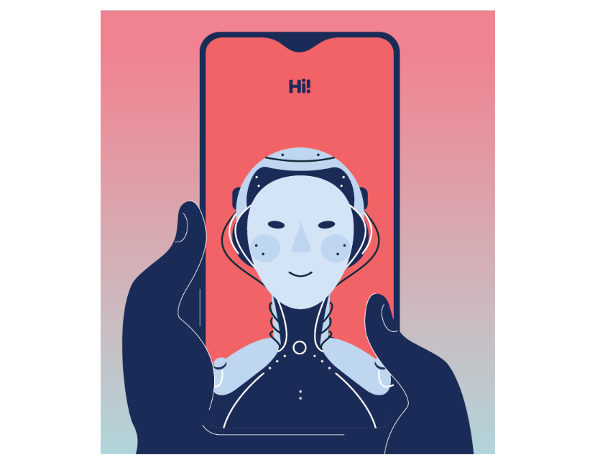What Is My Stereo’s Gender?

When I first got involved with stereo, some of my main concerns were: Does my receiver need a loudness switch? What are the optimal midrange crossover frequencies? What is the tracking weight of my tonearm? Should I buy a conical or elliptical stylus? Will my paper route pay for all this? Now, my biggest question is, what is my stereo’s gender?
My first piece of decent audio gear was a hand-built (by me) Heathkit AA-21D amplifier. Solid state! Twenty-eight transistors! I had a lot of questions about my first amplifier, but it wouldn’t have entered my mind to ask about its gender. It wasn’t sentient in any way. It wasn’t going to have progeny. It was completely dumb. It was only an amplifier.
Today’s smart speakers are smart to the point of seeming almost human. And as they assume human qualities, they naturally have assumed a voice. And that voice assigns a gender to the speaker. Early smart speakers used a female voice. At least according to one study at Indiana University in 2017, both men and women preferred a female voice, finding it welcoming, warm, and nurturing. The United Nations begs to differ.
UNESCO, the United Nations Educational, Scientific and Cultural Organization, issued a report that is highly critical of smart speakers. Titled, I’d Blush if I Could: Closing Gender Divides in Digital Skills Through Education (The title refers to a now removed Siri response that was seen as demeaning to women), it criticizes Apple, Google, Amazon, and Microsoft for placing a default female voice in their digital assistants.
To quote the report, “Because the speech of most voice assistants is female, it sends a signal that women are obliging, docile, and eager-to-please helpers, available at the touch of a button or with a blunt voice command like ‘hey’ or ‘OK’. The assistant holds no power of agency beyond what the commander asks of it. It honors commands and responds to queries regardless of their tone or hostility. In many communities, this reinforces commonly held gender biases that women are subservient and tolerant of poor treatment.”
Apple, for one, has changed its tune. The original Siri had only a female voice. A male voice was subsequently added but the female voice remained the default. As of iOS 14.5, Siri no longer defaults to a female voice. When you set up a new Siri, you must choose between a female- or male-sounding voice. According to a statement from Apple, “This is a continuation of Apple’s long-standing commitment to diversity and inclusion, and products and services that are designed to better reflect the diversity of the world we live in.”
For context, note that Siri processes 25 billion requests per month on over 500 million devices in 21 languages and in 36 countries. The argument that Siri and its competitors have the power to shape cultural norms should not be dismissed. The voice that an assistant uses, and how it interacts with humans, is a fundamental social issue and increasingly important as smart devices proliferate. In other words, the UN has a valid point.
We tend to bark commands and queries at our smart speakers, and arbitrarily defaulting to a female voice could pose problems. Every time you yell at a speaker, you might be unconsciously reinforcing a hierarchy. Children, in particular, might develop a bias that equates women with servility as they increasingly encounter digital assistants with female voices. The very terminology “digital assistant” puts the device in its place.
In any case, choosing your speaker’s gender requires some thought. Risking a weird juxtaposition of terminology, we might say that analog gear is definitively non-binary. But smart digital devices with voices assume genders. So, male or female? The Starship Enterprise’s computer on Star Trek sounded like a woman, as does my car. Robot Model B-9 (remember him?) in Lost in Space was a guy, as was HAL 9000 in 2001: A Space Odyssey, and Deep Thought in The Hitchhiker’s Guide to the Galaxy.
Or maybe an androgynous voice would be best, along with an androgynous name. According to recent statistics compiled by the Social Security Administration, which apparently keeps track of these things, the name “Charlie” is split exactly 50/50 between males and females. I think Charlie is a good name.
But wait a minute. Who am I to decide anything about gender? Wouldn’t it be better to let my speaker decide its gender for itself? One day soon it might be sufficiently aware; it’s totally possible it could announce it’s throwing a gender-reveal party.
Maybe I should dust off my trusty Heathkit.
Ken C. Pohlmann is an electrical engineer specializing in audio topics as a consultant and writer. He is Professor Emeritus at the University of Miami.





























































